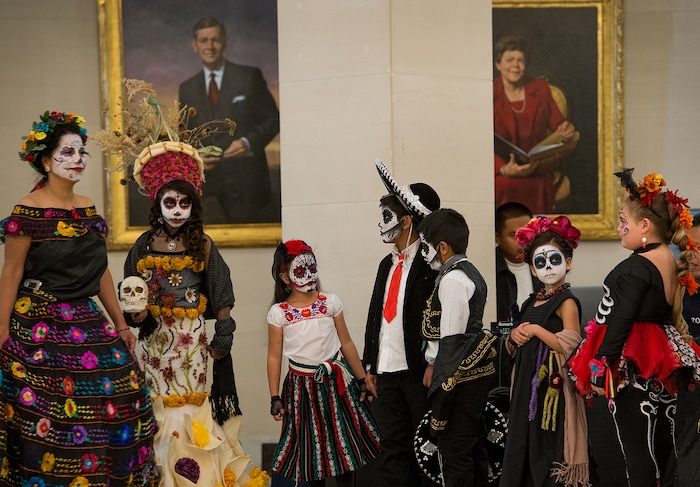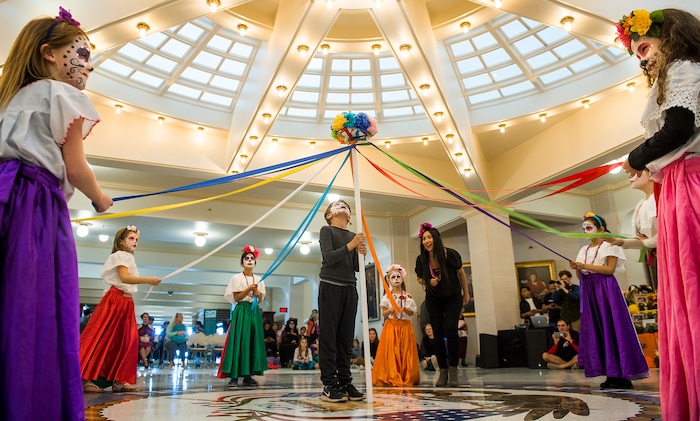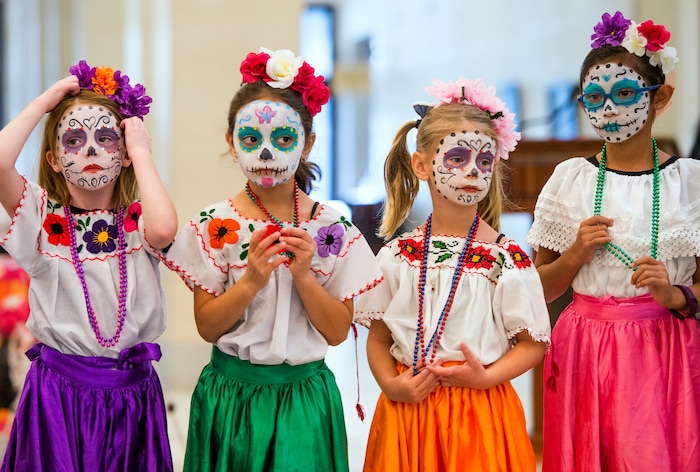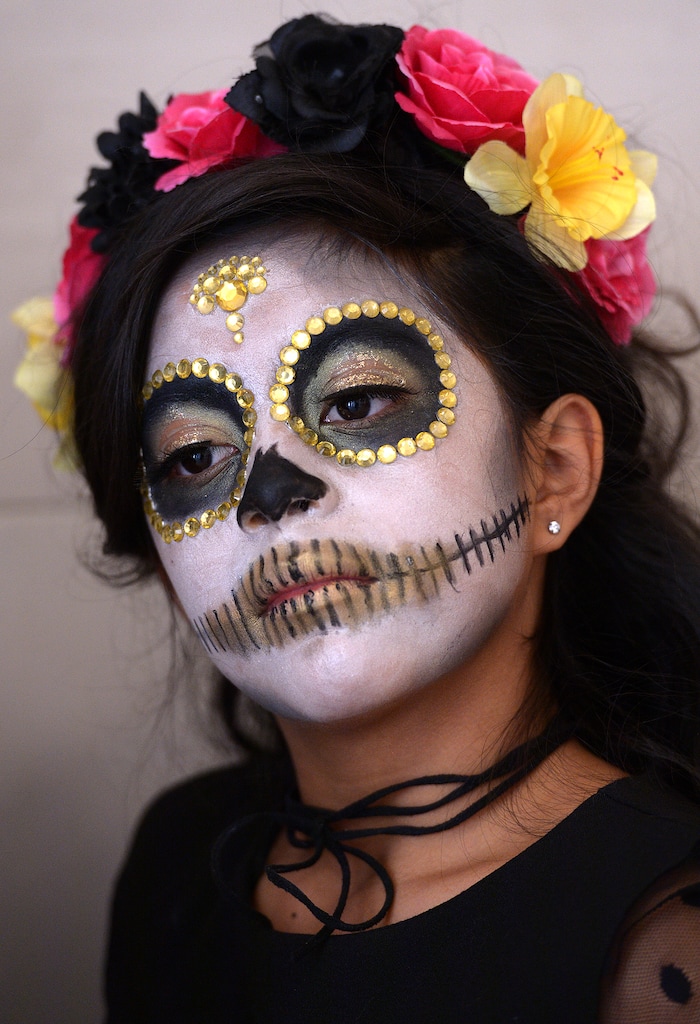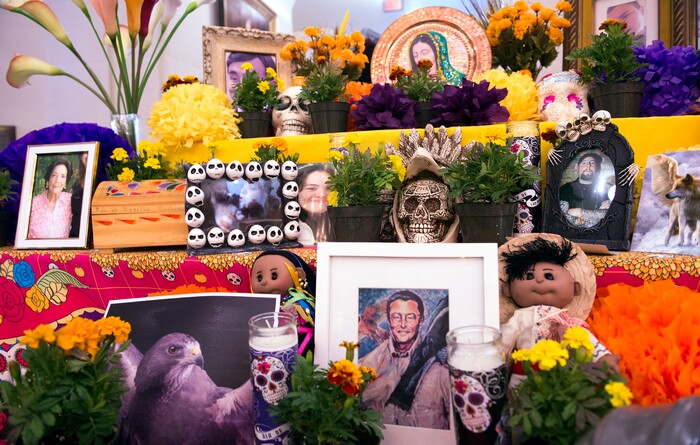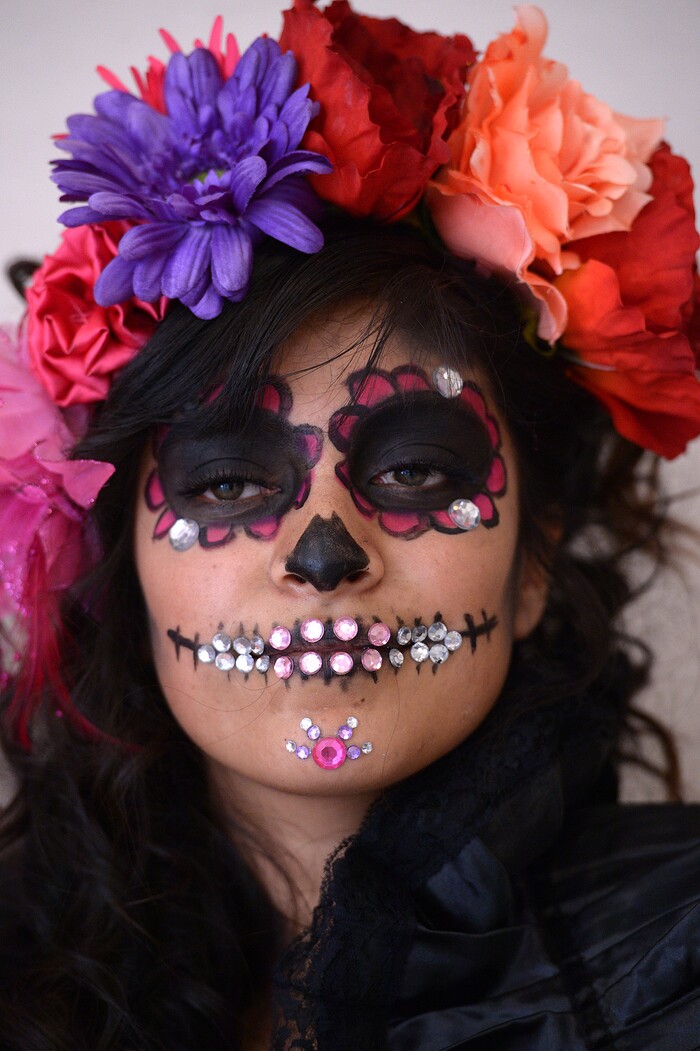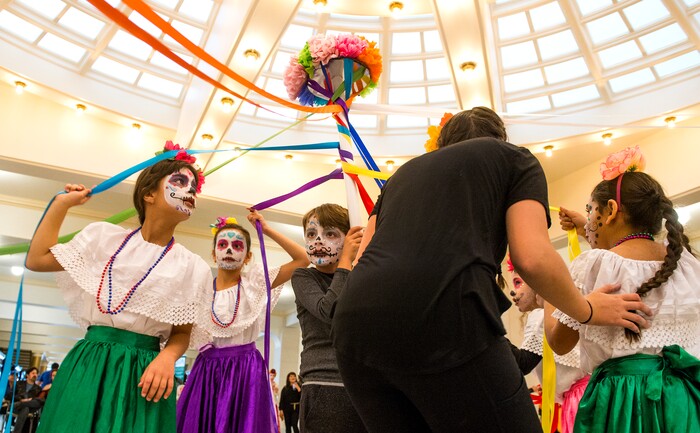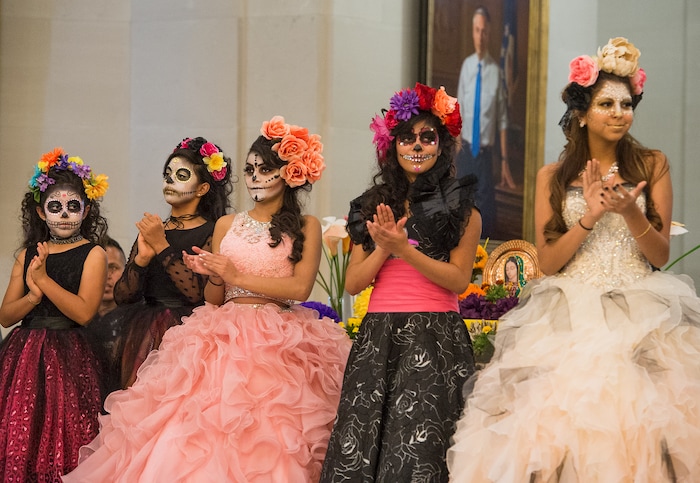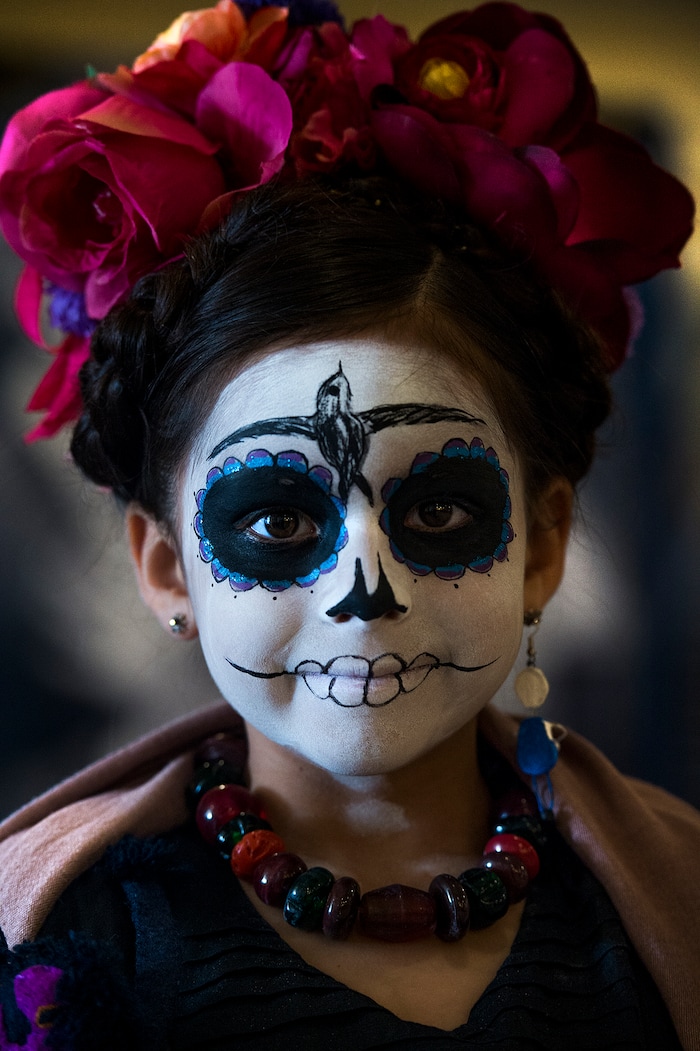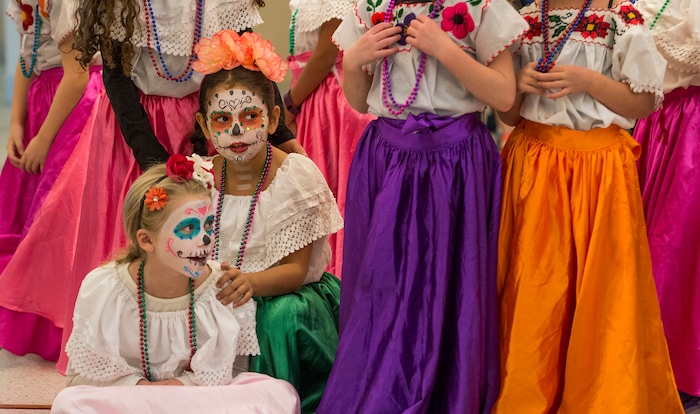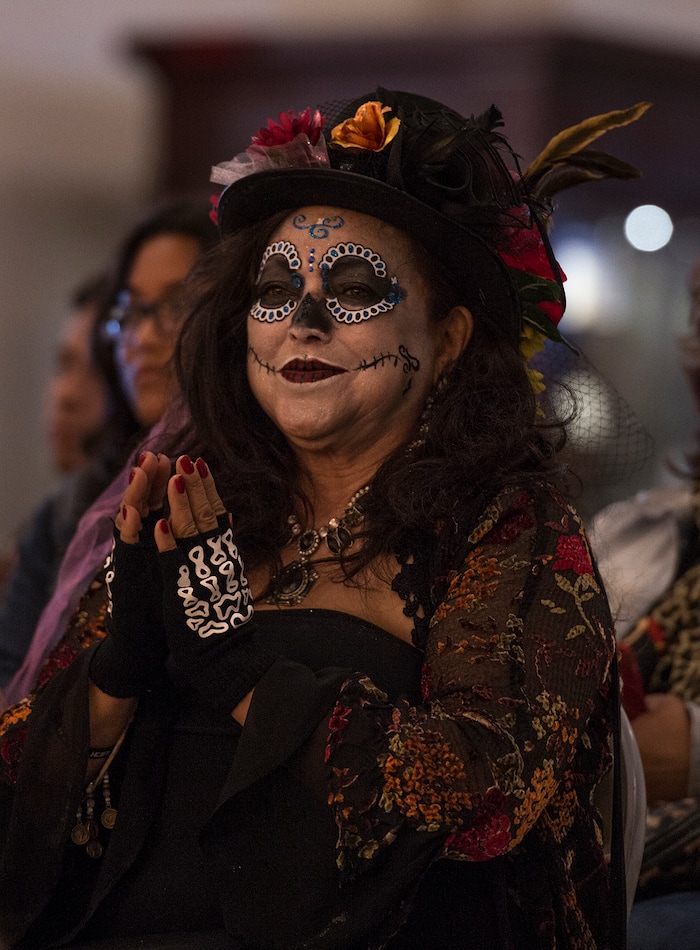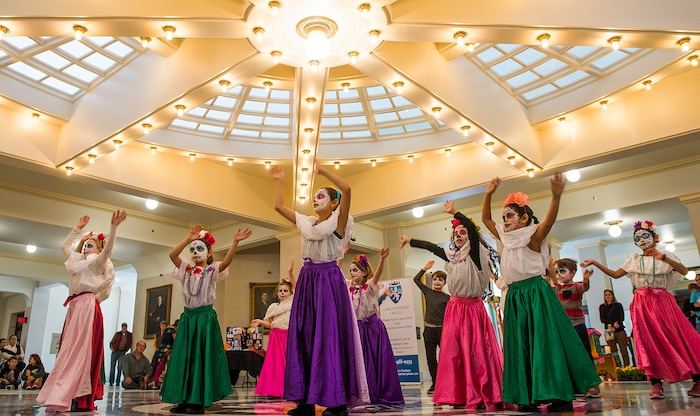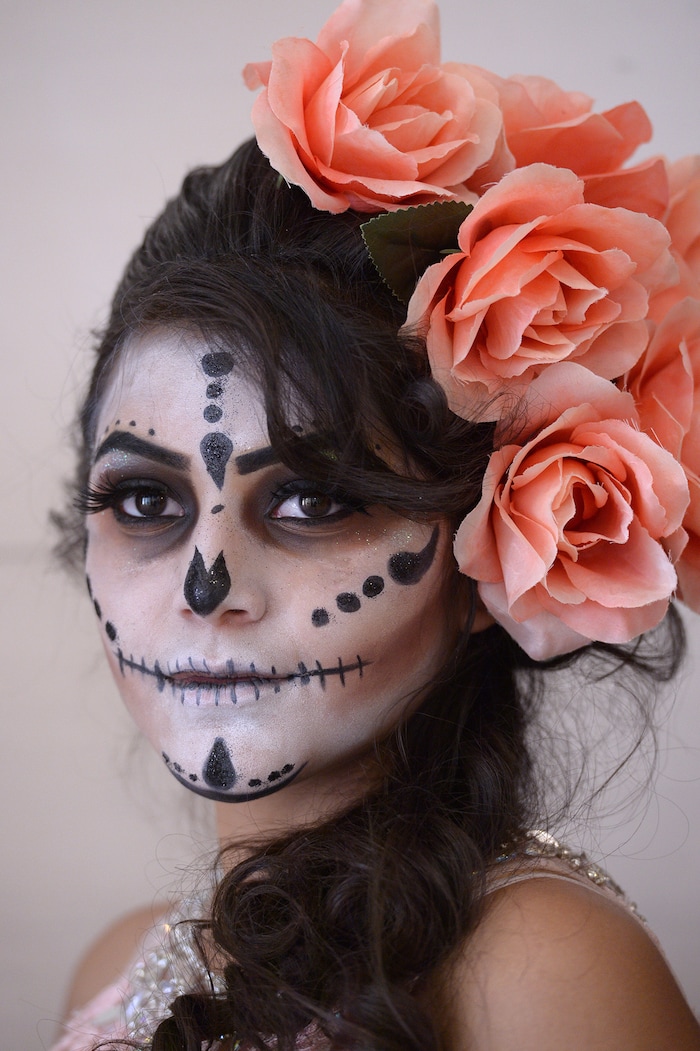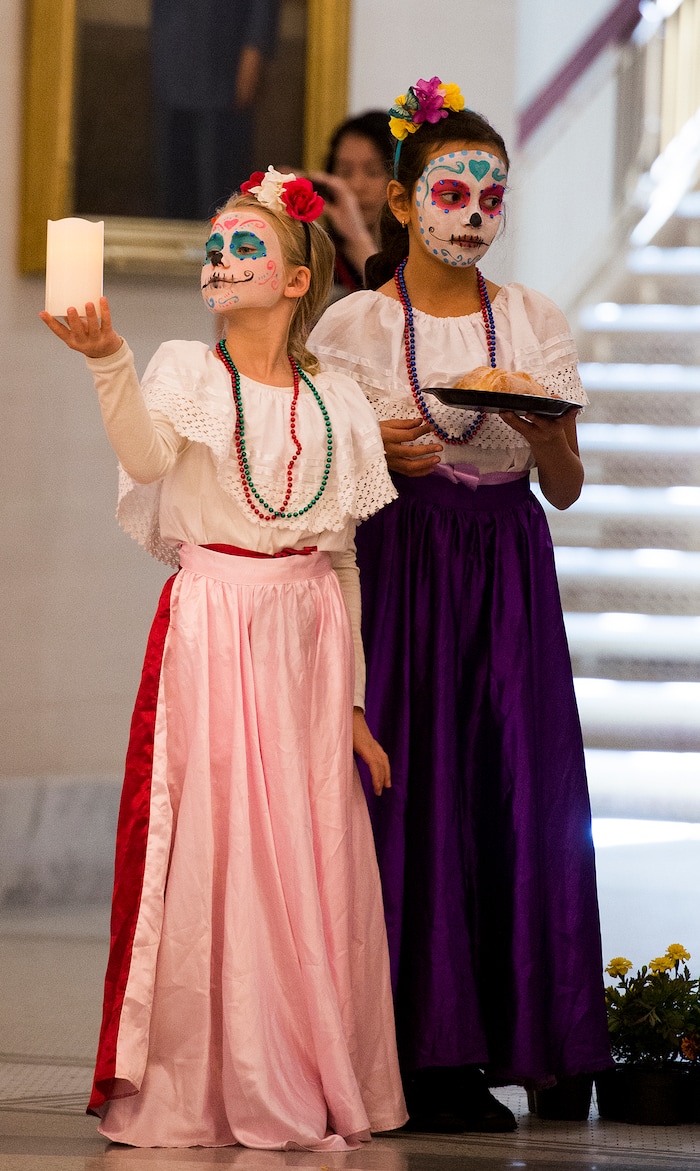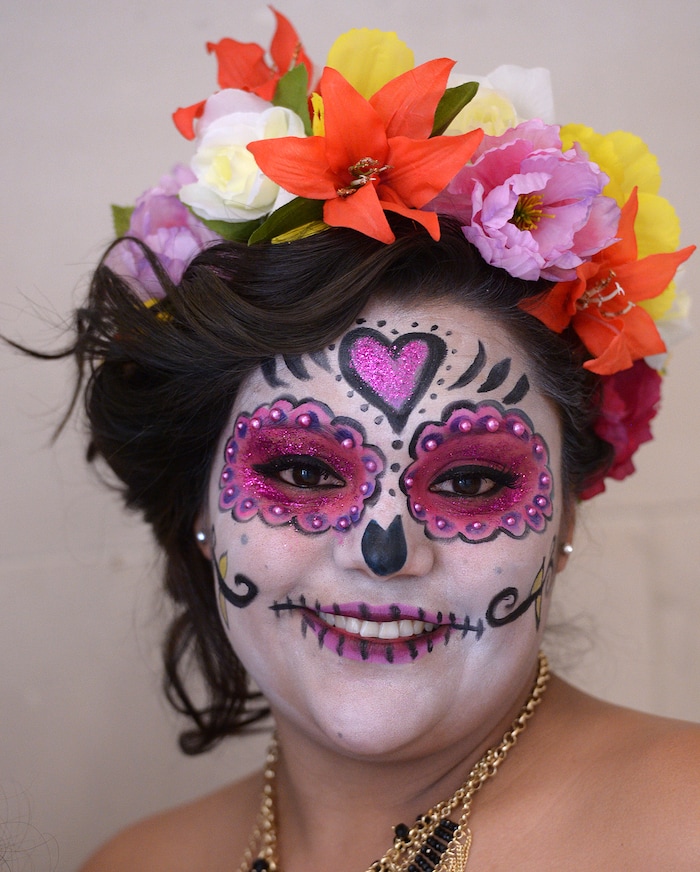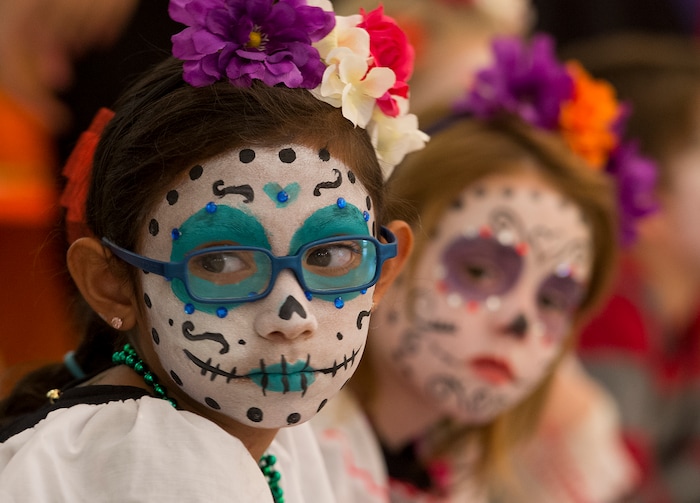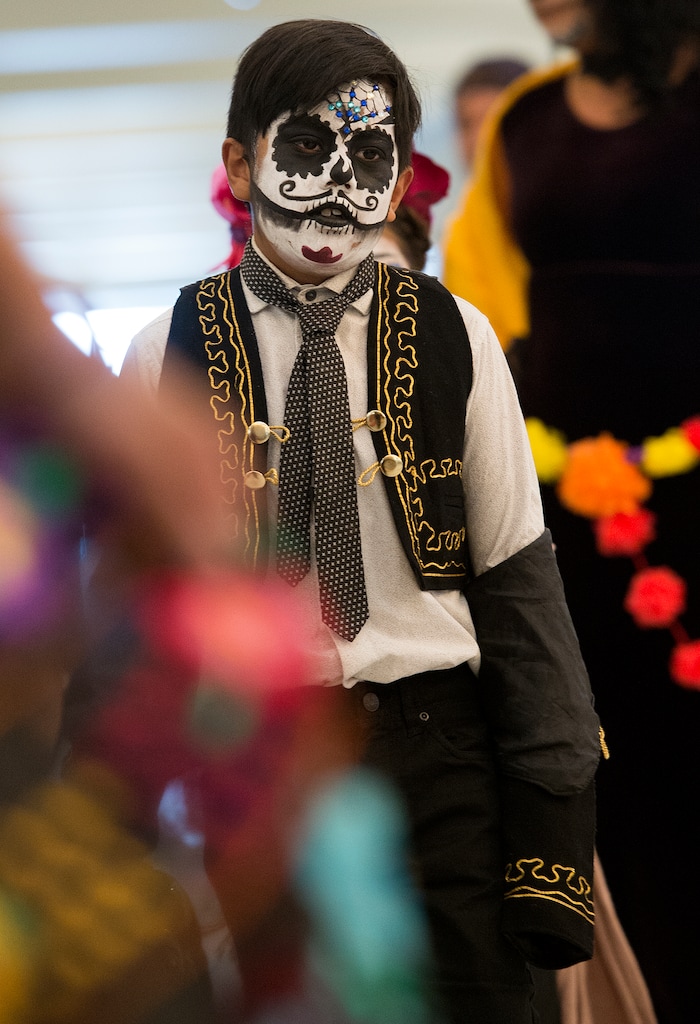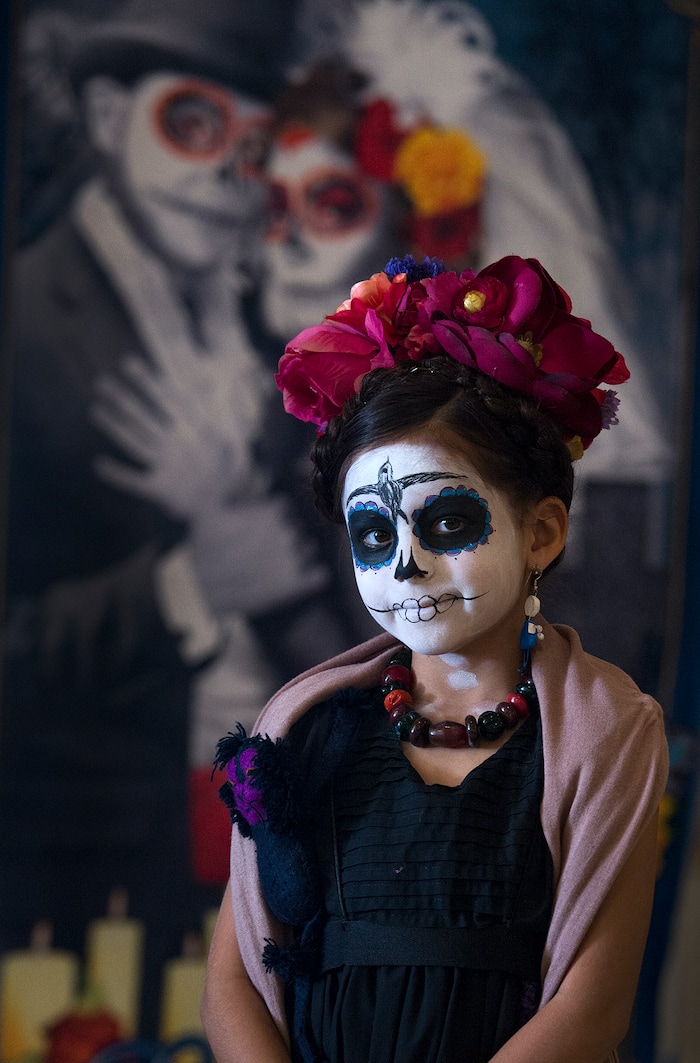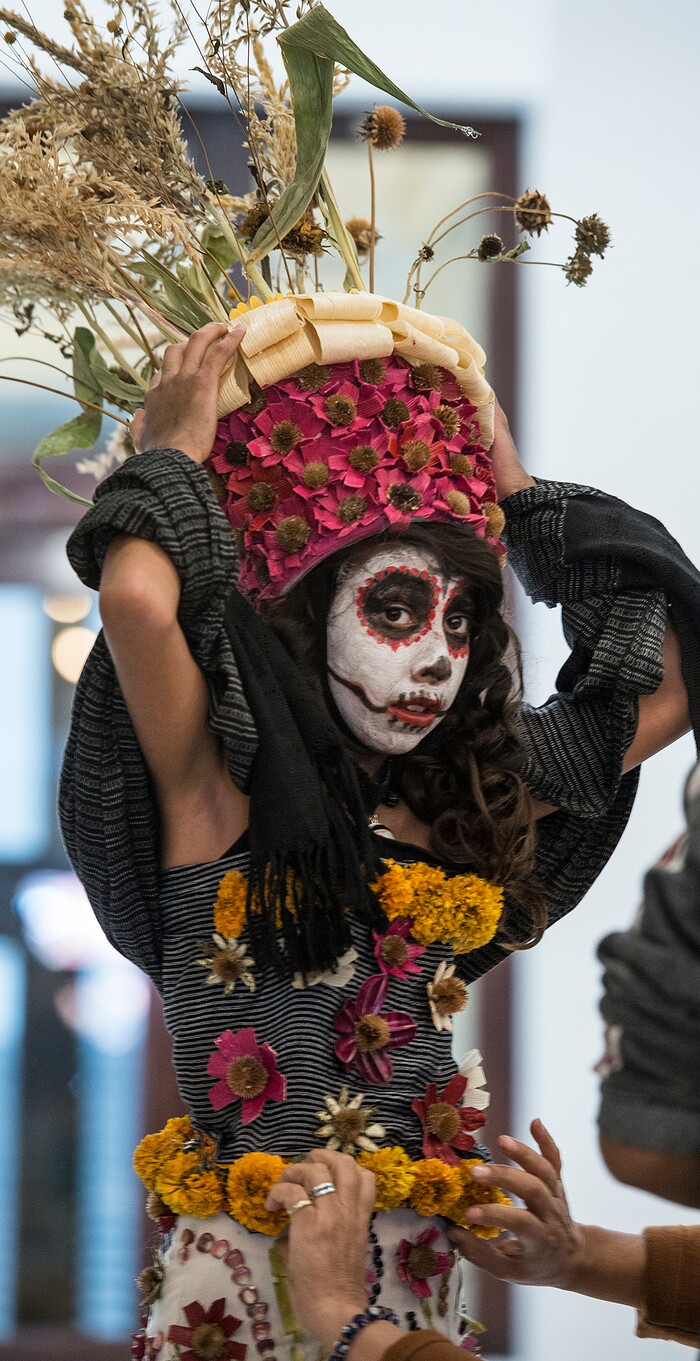The Utah State Capitol looked haunted Saturday with scores of skeletons celebrating and dancing — or Latinos dressed and face painted to look like them.
It made for a lively (and early) official state Day of the Dead celebration, or Dia de los Muertos, with candlelike lights and marigolds in the Capitol to help guide the dead back with their bright colors and scents, and some loud music, too.
“It’s a lot different than American Halloween,” said Mexican native Maria Romero, now of Salt Lake City, who wore a black dress, skull-shaped earrings and a cameo pin with a skull — and held a cane also topped by a small skull.
“We celebrate and remember our family and ancestors” who have died and don’t try to make the multiday holiday “morbid or scary — just fun,” she said.
As part of that, “We eat the foods that our relatives liked the best to remember them,” she said, often with private altars with those foods and beverages, plus photos of the departed.
Day of the Dead often is celebrated throughout October and November. Salt Lake City Mayor Jackie Biskupski signed a proclamation at the Capitol celebration declaring Oct. 31 to Nov. 2 as the official Day of the Dead period here.
Biskupski told the crowd, “We never want to forget who came before us and how they served us.”
According to Mexican tradition, the gates of heaven open at midnight on Oct. 31 and allow the spirits of deceased children to reunite with their families for 24 hours. Nov. 1 is All Saints Day, when adult spirits come to visit. And Nov. 2 is All Souls Day, when families decorate graves of relatives — often with their favorite foods.
“This is a celebration of life,” Jose Borjon, Mexico’s consul to Utah, told the crowd shortly before a traditional parade of “catrinas y catrines” (elegant female and male skeletons) and a contest for the best costumes.
He noted the fiesta originated in Mexico, with roots to times before Christopher Columbus arrived in America, but it has spread to other countries.
(Leah Hogsten | The Salt Lake Tribune) Day of the Dead costume contestant Mayra Castro said it two nearly two days for her and her mother Maria Gervacio to make her dress at the festival Saturday, October 21, 2017 at the Capitol.
(Leah Hogsten | The Salt Lake Tribune) The Arte Primero dancers during the Day of the Dead festival Saturday, October 21, 2017 at the Capitol.
He said the celebration “demonstrates the vibrancy of the Mexican culture,” and “allows us the opportunity to share our values, our culture” and “show we are a vibrant part of this state of Utah.”
State Rep. Sandra Hollins, D-Salt Lake City, called Day of the Dead “a tradition full of culture and beauty” and urged the crowd to especially celebrate “those who fought for social justice and civil rights,” such as the late labor leader Cesar Chavez.
Tracy Schmidt, executive director of Intermountain Donor Services, encouraged especially celebrating people who “gave the gift of life” by choosing to donate organs, eyes and tissue to help the living — and to consider honoring them by also registering on driver licenses to become donors.
“There are over 100,000 people waiting for a life-saving donation,” he said.
Biskupski in her comments encouraged “all residents of Salt Lake City to take this opportunity to learn about Mexican culture and celebrate with loved ones, both past and present.”
